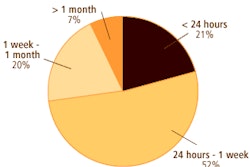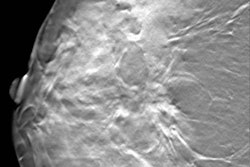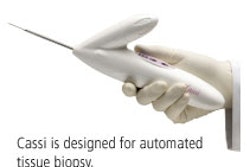Computer-aided detection (CAD) for mammography has demonstrated its utility in a number of studies since its introduction in 1998. In what may be the largest test for the technology to date, radiologists at a hospital-based community practice in San Francisco used CAD in more than 100,000 consecutive screening mammograms at a single site over a period of 46 months.
"The purpose of the study was to determine the characteristics of computer-aided detection at screening mammography in a high-volume community hospital breast imaging practice," said Dr. Jessica Leung, an assistant professor of radiology and director of breast imaging research and education at the University of California, San Francisco. She presented the results of the prospective study at the 2006 American Roentgen Ray Society (ARRS) meeting in Vancouver.
A group of nine Mammography Quality Standards Act (MQSA)-certified radiologists at the Breast Health Center, California Pacific Medical Center in San Francisco used two versions of a CAD application (R2 ImageChecker versions 2.2 and 5.2, R2 Technology, Sunnyvale, CA) on 105,336 digitized screening mammograms from August 2001 through May 2005.
"At the time of mammography interpretation, each of the nine radiologists was asked to determine, without CAD, whether he or she would recall any findings," Leung said.
The CAD application was then used and its markings were examined. If a patient recall was requested, the radiologists were required to enter into a database whether the finding prompting recall was attributable to CAD only, radiologist only, or both.
In addition to the prospective data, audit parameters were also examined in an analysis between the study cohort and 100,689 consecutive screening mammograms conducted by the facility during the 46-month period prior to the implementation of CAD.
"The audit parameters that were examined were recall rate, cancer detection rate, stage at diagnosis, and positive predictive values 1, 2, and 3 as defined in the BI-RADS Atlas," Leung said.
The group used an outcome tracking systems that linked each BI-RADS assessment from the initial interpretation to subsequent BI-RADS assessment after recall. In addition, the primary BI-RADS assessments were linked to tissue diagnosis data if a biopsy was performed. Statistical analysis was then performed (SAS 9.2, SAS Institute, Cary, NC) on the data and results were obtained.
After the implementation of CAD, the recall rate increased by 12.1%, from 5.8% (5,793) of the cohort pre-CAD implementation to 6.5% (6,819) of the cohort post-CAD implementation. Although CAD did increase the recall rate, it was still within the acceptable parameters as defined in the BI-RADS Atlas, according to Leung.
In the study cohort, a total of 341 cancers were identified. Nine of these were attributed to CAD detection alone at the time of screening, for a cancer detection increase of 3%, she said. Of the CAD-detected cancers, six were ductal carcinoma in situ (DCIS) seen as calcifications by the radiologists, two were invasive ductal carcinomas seen as masses, and one was an invasive lobular carcinoma seen as architectural distortion.
"Very importantly, there were 34 cancers out of these 341 that were not marked by CAD at all," she said.
Overall, the cancer detection rate remained that same at 3.2 per 1,000 screening mammograms both before and after CAD implementation, Leung reported.
Although CAD use did add slight benefit in detecting some cancers that were initially missed, Leung cautioned radiologists against relying too heavily on these applications.
"A very important take-home point is that a substantial number of cancers, 10% in our series, were never marked by CAD, so the radiologist still needs to be vigilant at screening mammography," she said.
By Jonathan S. Batchelor
AuntMinnie.com staff writer
June 26, 2006
Related Reading
X-ray CAD aids in early lung cancer detection, June 22, 2006
Experimental CAD scheme makes quick work of bone scintigraphy analysis, June 5, 2006
CAD improves lung nodule detection, June 1, 2006
CAD finds breast cancers that radiologists missed for years, March 6, 2006
CAD may cut down on missed breast cancers, January 30, 2006
Copyright © 2006 AuntMinnie.com



















